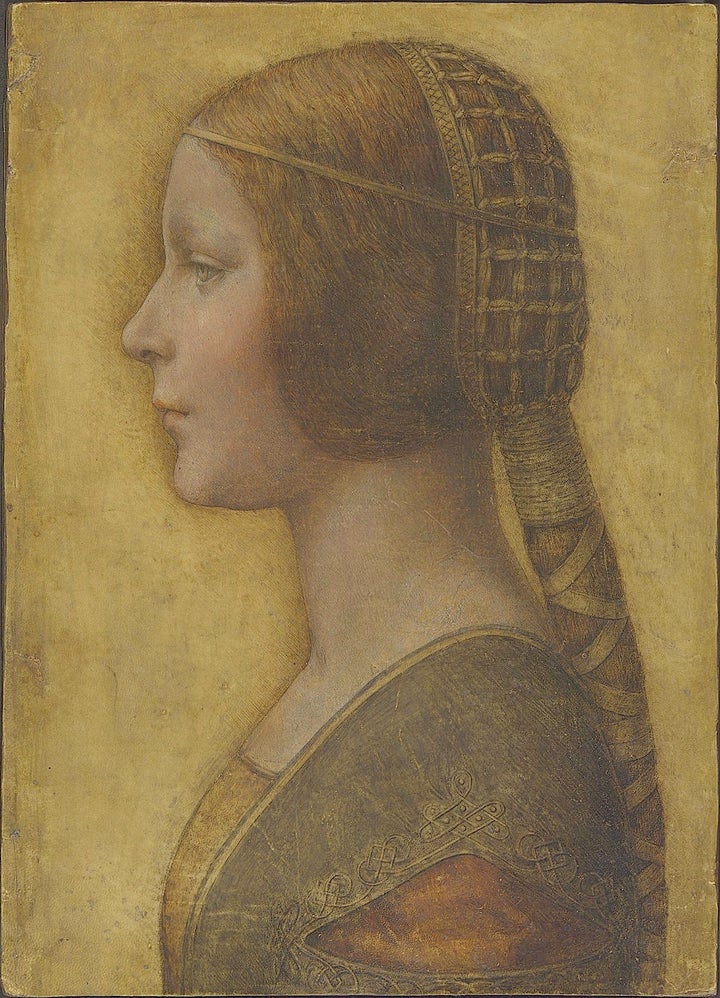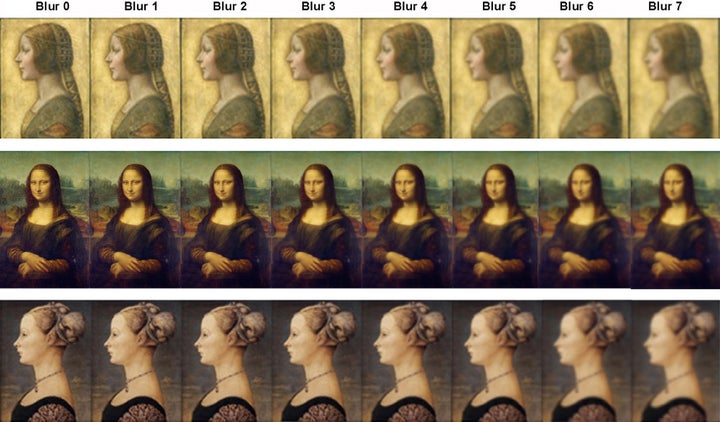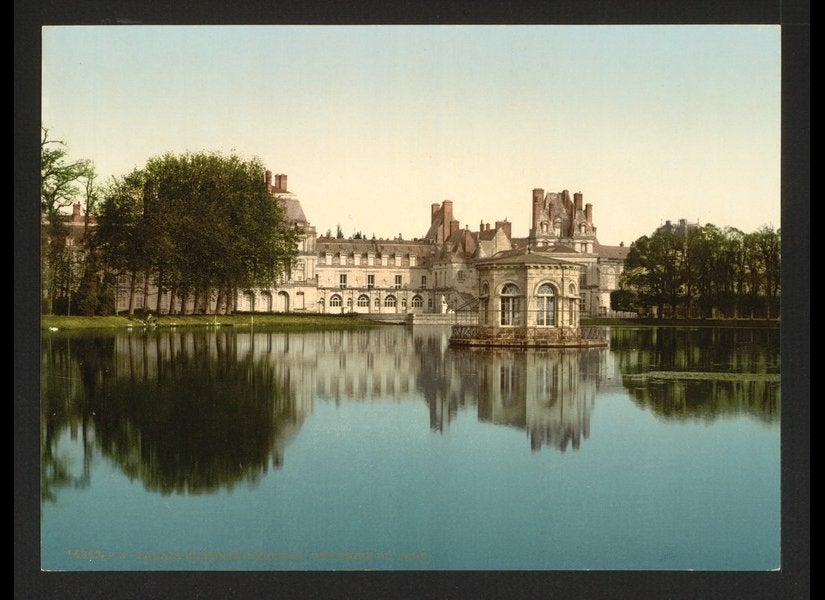The mystery of Mona Lisa's smile is probably one of the first things you learned about in art class. But it turns out Mona Lisa may not be the only painted lady to be working this signature, coy look.
Experts and art fans take notice of Leonardo da Vinci's famous grin because of its uncanny ability to shape-shift. Look right at the smirk and you can hardly see any recognizable signs of happiness. But as you zoom out, let your eyes travel to her eyes and cheeks and hair, you'll notice, out of the corner of your eye, that Ms. Mona seems, all of the sudden, to be smirking.

This little bit of art world magic is possible thanks to the different ways our eyes perceive stimulus depending on whether we're encountering the world head on or from the periphery. As Stephen Macknik of Scientific American explained: "While the neurons at the center of our vision see a very small portion of the world -- giving us high-resolution vision -- neurons in the periphery perceive larger portions of the visual scene, and hence possess lesser resolution."
Margaret Livingstone, a neuroscientist at Harvard Medical School with an interest in art history, was the first to come to this conclusion in the year 2000. Livingstone conducted an experiment using Adobe Photoshop, blurring and sharpening different parts of the painting to imitate the blurring that occurs naturally in our vision field.
She discovered that Mona Lisa's smile grows as it gets more blurred to the right; and it's more apparent in peripheral vision. In scientific terms, the phenomenon can be "explained through the notion that different retinal neurons are adjusted to varying the content of spatial size information in the image, which scientists refer to as its spatial frequency distribution."
So we know the secret to Mona Lisa's signature smile. However, while Lisa del Giocondo might be the most well-known of Leonardo's muses, she might not be the only one of his subjects to employ this simpering look.

It wasn't until 2011 that experts authenticated "La Bella Principessa" as a work by Leonardo himself. And it's not until even more recently that Alessandro Soranzo and Michael Newberry of Sheffield Hallam University conducted a study, published in Vision Research, that explored the intricacies of the subject's expression.
To make a long study short, Soranzo and Newberry confirmed that La Bella herself did share Mona Lisa's enigmatic grin. And, what's more, since "La Bella Principessa" was painted before Mona, it seems like it's Mona Lisa who is the copycat.
This research presents a new illusion which is similar to that identified in the Mona Lisa; La Bella Principessa's mouth appears to change slant depending on both the Viewing Distance and the Level of Blur applied to a digital version of the portrait. Through a series of psychophysics experiments, it was found that a perceived change in the slant of the La Bella Principessa's mouth influences her expression of contentment thus generating an illusion that we have coined the "uncatchable smile."
The more important lesson, however, is that Leonardo was well aware of the visual mastery at play in his works. Mona Lisa's subtly shifting smile was not an accident, but a carefully crafted visual puzzle, one that would baffle art historians and scientists for centuries to come.


